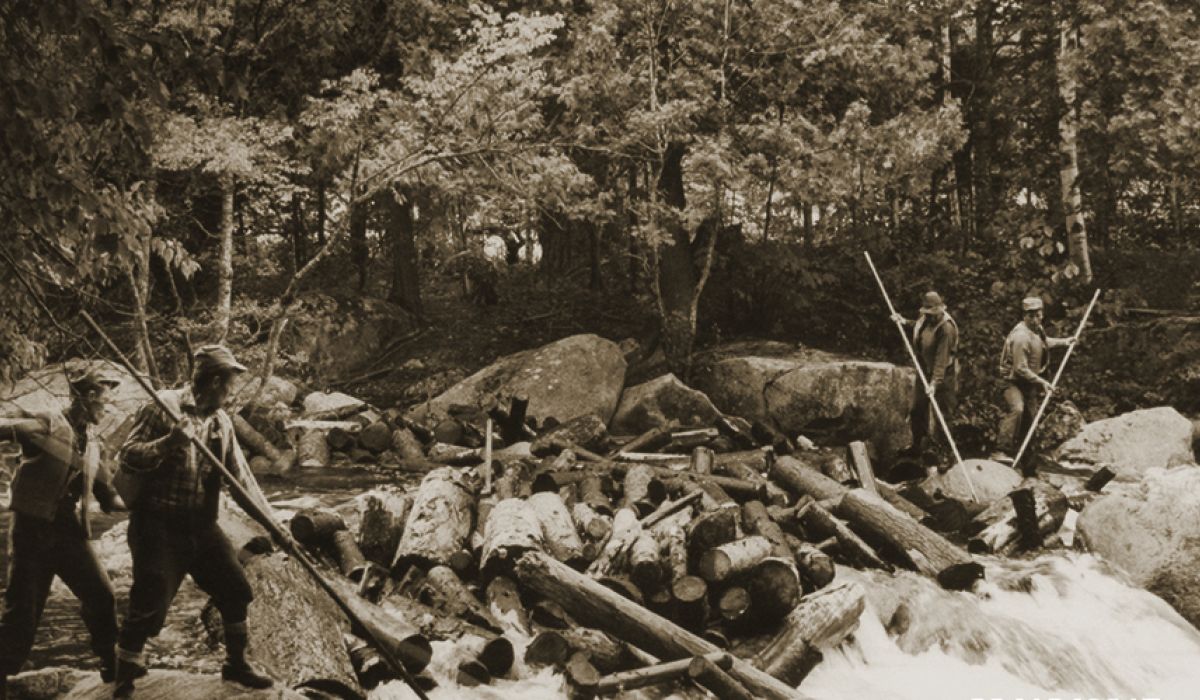Secrets Of Maine’s Northern Forest Logging Camps

Ever wondered what life was like in Maine's northern forest logging camps? These camps, hidden deep within the woods, were once bustling hubs of activity. Loggers worked tirelessly, cutting down massive trees and transporting them to sawmills. The camps were more than just work sites; they were communities where workers ate, slept, and shared stories by the fire. Imagine waking up to the sound of axes and saws, the smell of pine filling the air. This glimpse into the past reveals a rugged lifestyle that shaped Maine's history. Ready to step back in time and learn more about these fascinating camps?
Discovering Maine's Northern Forest Logging Camps
Maine's northern forests hold a rich history of logging camps that once thrived in the dense woods. These camps were the backbone of the logging industry, providing shelter, food, and camaraderie for the hardworking loggers. Let's take a journey through some of the most fascinating logging camps in Maine's northern forests.
1. Churchill Depot
Churchill Depot, located in the heart of the Allagash Wilderness Waterway, was a bustling logging camp in the early 1900s. This camp served as a major hub for loggers working in the surrounding forests. Today, visitors can explore the remnants of the camp, including old bunkhouses and equipment, and imagine what life was like for the loggers who called this place home.
2. Chesuncook Village
Chesuncook Village, situated on the western shore of Chesuncook Lake, is one of the oldest logging communities in Maine. Established in the mid-1800s, this village was a key location for loggers working in the nearby forests. The village still retains much of its historic charm, with several original buildings and a small museum dedicated to the logging history of the area.
3. Telos Dam
Telos Dam, located near the headwaters of the Penobscot River, was a crucial site for loggers in the 19th century. The dam was used to control water levels and facilitate the transportation of logs downstream. Visitors can explore the remains of the dam and the surrounding area, which offers a glimpse into the engineering feats that made large-scale logging possible.
4. Eagle Lake and West Branch Railroad
The Eagle Lake and West Branch Railroad was a vital transportation route for logs in the early 20th century. This narrow-gauge railroad connected remote logging camps with mills and markets. Today, visitors can hike along the old railroad bed and see remnants of the tracks, bridges, and other infrastructure that once supported the logging industry.
5. Big Machias Lake
Big Machias Lake, located in the North Maine Woods, was home to several logging camps in the late 1800s and early 1900s. The lake provided a natural route for transporting logs to mills downstream. Visitors can explore the area and find traces of the old camps, including foundations, tools, and other artifacts left behind by the loggers.
6. Umbazooksus Lake
Umbazooksus Lake, nestled in the heart of the North Maine Woods, was a key location for loggers in the early 20th century. The lake served as a staging area for logs being transported to mills along the Penobscot River. Today, visitors can paddle along the lake and explore the remnants of the logging camps that once dotted its shores.
7. Caucomgomoc Lake
Caucomgomoc Lake, located in the remote wilderness of northern Maine, was a major logging area in the late 1800s. The lake and its surrounding forests were home to numerous logging camps, which supported the booming timber industry. Visitors can hike through the area and discover the remains of these camps, including old cabins, tools, and other artifacts.
8. Allagash River
The Allagash River, flowing through the heart of Maine's northern forests, was a vital transportation route for logs in the 19th and early 20th centuries. Numerous logging camps were established along the river to support the log drives that transported timber downstream. Today, visitors can paddle along the river and explore the sites of these historic camps, many of which still retain traces of their past.
The Enduring Legacy of Maine's Logging Camps
Maine's northern forest logging camps offer a glimpse into a rugged past. These camps were more than just places to work; they were communities where loggers shared stories, meals, and hardships. The legacy of these camps lives on in the traditions and tales passed down through generations. Visiting these historic sites today, you can almost hear the echoes of axes and the camaraderie of the loggers. Exploring these camps provides a deeper appreciation for the hard work and resilience of those who shaped Maine's forests. Whether you're a history buff or just curious, the logging camps of Maine's northern forests are a testament to human endurance and the spirit of adventure. The stories and experiences from these camps continue to inspire and remind us of the importance of preserving our history.

